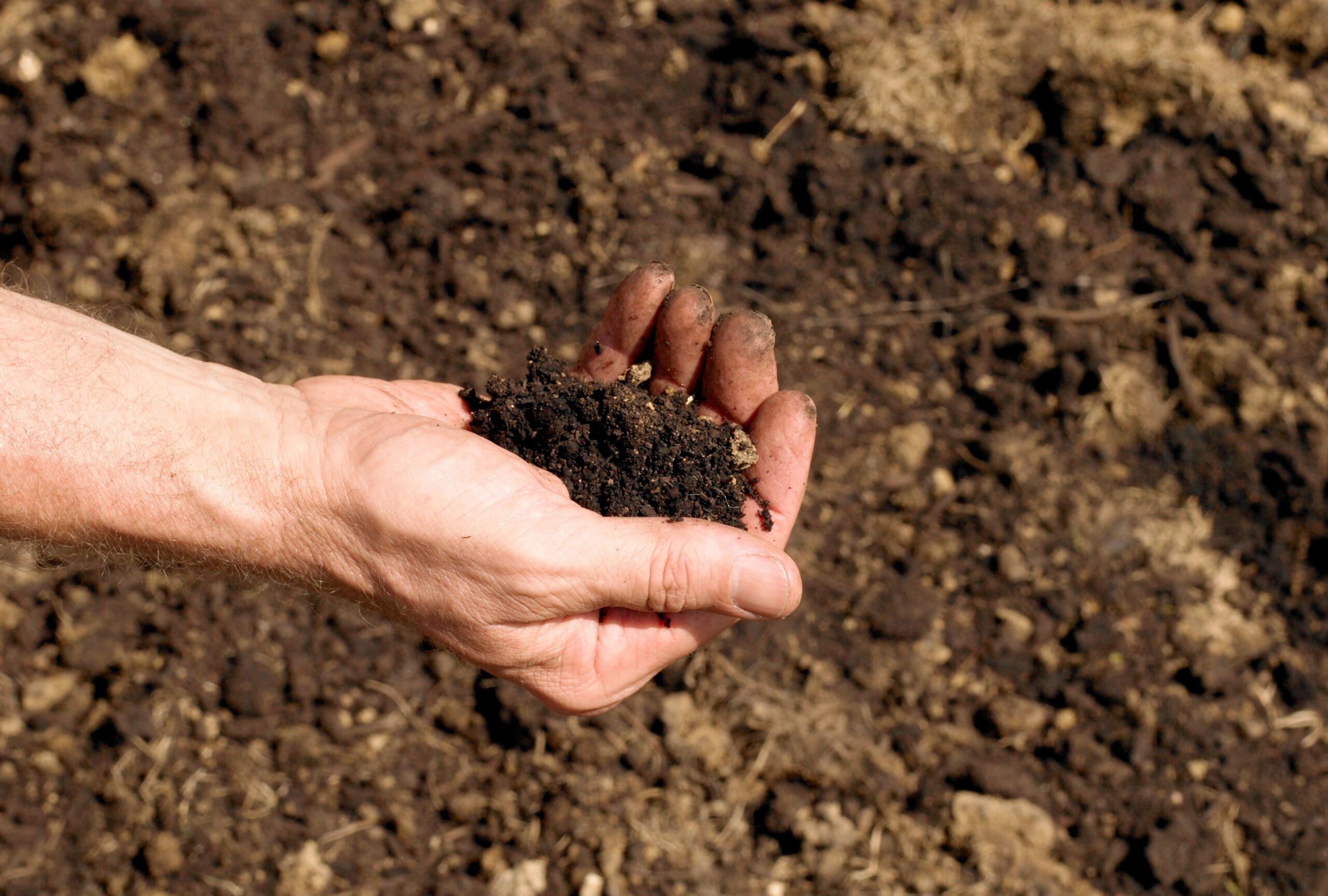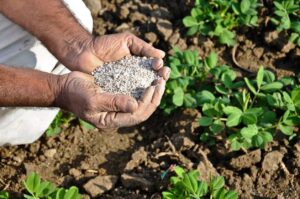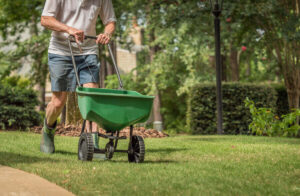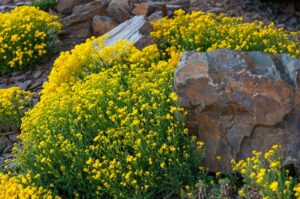Loam Garden Soil: The Complete Guide for Garden Success
When you’re serious about gardening, nothing matters more than the quality of your soil. While many gardeners focus on choosing the right plants or perfecting their watering schedule, experienced green thumbs know that soil is the true foundation of garden success. Among all soil types, loam is widely considered the gold standard for gardening. But what exactly is loam soil, why is it so prized, and how can you create, maintain, or improve it in your own garden? This comprehensive guide explores everything you need to know about loam garden soil to transform your growing space into a thriving oasis.
What Makes Loam Garden Soil Special?
Loam soil is often described as the “perfect” soil type, and for good reason. When you run genuine loam through your fingers, you’ll notice it has a distinctive feel—crumbly yet slightly sticky, able to form a loose ball when moist that easily breaks apart. This unique texture comes from loam’s balanced composition of sand, silt, and clay particles, typically in ratios of approximately 40% sand, 40% silt, and 20% clay.
This ideal mixture gives loam soil properties that make it exceptional for nearly all gardening applications:
Superior Drainage with Optimal Water Retention: Loam soil strikes the perfect balance between draining excess water to prevent root rot while retaining enough moisture to sustain plants between waterings. The sand component creates spaces for water to flow through, while the silt and clay particles hold onto essential moisture.
Excellent Aeration: The varied particle sizes in loam create numerous tiny air pockets throughout the soil. These spaces allow roots to access oxygen, which is critical for healthy root development and nutrient uptake.
Rich in Nutrients: Loam soil typically contains higher levels of organic matter than other soil types, providing essential plant nutrients and supporting beneficial soil microorganisms. The clay component in loam has a negative electrical charge that helps attract and hold positively charged nutrients, preventing them from leaching away during watering or rainfall.
Workability: Unlike heavy clay that becomes compacted or loose sandy soil that doesn’t hold shape, loam offers ideal workability. It’s easy to dig in, doesn’t cement together during dry periods, and doesn’t wash away in heavy rain.
The United States Department of Agriculture (USDA) classifies soil textures based on their particle composition, with loam occupying the central position in their soil classification triangle. According to research from the USDA Natural Resources Conservation Service, soils with loam composition show significantly improved plant production across most crop and ornamental species. You can explore more about soil classification on the USDA Natural Resources Conservation Service website.
Understanding Soil Composition: The Science Behind Loam
To truly appreciate loam soil, you need to understand its components and how they interact. Soil scientists classify soil particles into three main categories based on size:
| Particle Type | Size Range | Characteristics |
|---|---|---|
| Sand | 0.05-2.0 mm | Large, visible particles; excellent drainage; poor nutrient retention; feels gritty |
| Silt | 0.002-0.05 mm | Medium-sized particles; moderate drainage and nutrient retention; feels smooth like flour when dry |
| Clay | Less than 0.002 mm | Microscopic particles; poor drainage; excellent nutrient retention; feels sticky when wet, hard when dry |
True loam soil contains a balanced proportion of these three particle types, creating a medium that harnesses the benefits of each while minimizing their drawbacks. Sandy loam contains more sand (around 60%), silty loam has more silt (around 60%), and clay loam contains more clay (around 30-40%)—each variation offering slightly different properties while maintaining the core benefits of loam.
Beyond these mineral components, healthy loam also contains approximately 5-10% organic matter, which further enhances its capabilities. Organic matter improves soil structure, increases water-holding capacity, provides slow-release nutrients, and supports beneficial soil life.
The soil pH of loam typically falls in the slightly acidic to neutral range (6.0-7.0), which is ideal for most garden plants. At this pH level, most nutrients remain available for plant uptake rather than becoming chemically bound and inaccessible, as happens in soils that are too acidic or too alkaline.
The Environmental Protection Agency (EPA) recognizes soil health as a critical environmental factor, noting that healthy soils like loam play important roles in water purification, carbon sequestration, and ecosystem stability. The EPA provides valuable resources on soil health and management practices at their Soils website.

Testing and Identifying Your Garden Soil Type
Before you can improve your garden soil, you need to know what you’re working with. Conducting a proper soil test will help you determine how close your existing soil is to loam and what amendments might be needed.
The Jar Test: DIY Soil Composition Analysis
The jar test is a simple way to estimate the proportions of sand, silt, and clay in your soil:
- Fill a clear quart jar about one-third full with soil from your garden.
- Add water until the jar is about 90% full.
- Add a teaspoon of dishwashing detergent (this helps separate the soil particles).
- Secure the lid and shake vigorously for several minutes.
- Set the jar on a level surface and allow it to settle undisturbed.
After about one minute, mark the level of particles that have settled—these are the sand particles. After two hours, mark the next level—these are the silt particles. The clay particles will take 24-48 hours to fully settle. Once all particles have settled, measure the height of each layer and calculate the percentage of each component.
A soil with roughly 40% sand, 40% silt, and 20% clay indicates loam. If your measurements show significantly different proportions, you’re dealing with another soil type that may need amendment to achieve loam-like properties.
Professional Soil Testing
While the jar test gives you information about soil texture, it doesn’t reveal nutrient content, pH, or organic matter levels. For a comprehensive analysis, consider sending a sample to your local Cooperative Extension Service, which typically offers affordable soil testing services.
A professional soil test will provide detailed information about:
- Soil pH level
- Nutrient content (N-P-K and micronutrients)
- Organic matter percentage
- Recommendations for amendments based on your specific gardening goals
The United States Cooperative Extension System operates through land-grant universities in each state, providing research-based information and soil testing services to home gardeners. You can find your local extension office through the USDA National Institute of Food and Agriculture website.
Creating Loam Soil in Your Garden
If your soil test reveals that you don’t have loam soil, don’t worry—you can gradually transform your existing soil into loam through consistent amendment practices. The approach varies depending on your starting soil type:
Improving Sandy Soil
Sandy soil lacks water and nutrient retention due to its large particles and excessive drainage. To make sandy soil more loam-like:
- Add organic matter: Incorporate 3-4 inches of compost, well-rotted manure, leaf mold, or other organic material into the top 6-8 inches of soil.
- Apply clay minerals: Products like bentonite clay can be added in small amounts to increase the clay component.
- Use cover crops: Plant “green manures” like clover or vetch during off-seasons and till them into the soil.
- Add coconut coir or peat moss: These materials improve water retention (though peat moss is less sustainable).
- Mulch heavily: Apply 2-3 inches of organic mulch to slowly break down and incorporate into the soil.
Improving Clay Soil
Clay soil has poor drainage and can become compacted, though it holds nutrients well. To transform clay soil toward loam:
- Add coarse sand: Mix in coarse builder’s sand (not fine beach sand) to improve drainage.
- Incorporate organic matter: Add 3-4 inches of compost or other organic material to improve structure.
- Apply gypsum: This amendment helps break up clay particles without affecting soil pH.
- Avoid working wet clay: Only dig or till when soil is moderately moist to prevent compaction.
- Use deep-rooted cover crops: Plants like daikon radish can naturally break up clay soil.
- Practice no-till gardening: Minimize soil disturbance to maintain improved structure.
Improving Silty Soil
Silty soil is already closer to loam than sandy or clay soils but often lacks structure and can become compacted. To enhance silty soil:
- Add organic matter: As with other soil types, compost improves structure and drainage.
- Incorporate some coarse sand: This improves drainage and reduces compaction.
- Minimize traffic: Create permanent paths to avoid compacting growing areas.
- Apply mulch: Protect the soil surface from crusting and erosion.
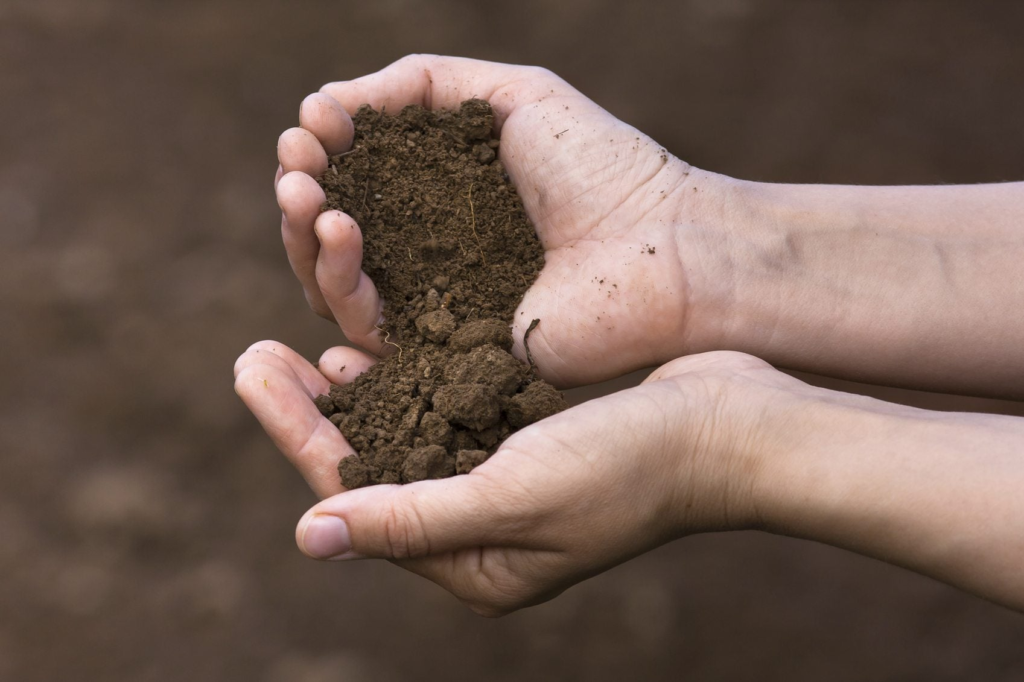
Creating Raised Beds with Custom Loam
If improving your native soil seems daunting, creating raised beds with a custom loam mixture may be more practical. A typical raised bed loam recipe includes:
| Component | Percentage | Purpose |
|---|---|---|
| Topsoil | 40-60% | Provides mineral content and structure |
| Compost | 30-40% | Adds organic matter and nutrients |
| Coarse Sand | 10-20% | Improves drainage and prevents compaction |
| Vermiculite or Perlite | 5-10% (optional) | Enhances aeration and water retention |
When purchasing topsoil for this mixture, look for screened topsoil with a loamy texture rather than heavy clay or sandy material. Mixing your own loam gives you complete control over the composition and quality of your garden soil.
The National Organic Program of the USDA provides guidelines for soil management practices that enhance soil health while maintaining environmental sustainability. These guidelines, which apply to creating and maintaining loam soil, can be found on the USDA Agricultural Marketing Service website.
Maintaining and Enhancing Loam Soil Over Time
Even if you’ve achieved perfect loam soil, maintaining its quality requires ongoing attention. Soil is a living ecosystem that changes over time, and garden activities can gradually deplete nutrients and organic matter.
Annual Amendments for Sustaining Loam Quality
To keep your loam soil in top condition:
- Add compost annually: Apply a 1-2 inch layer of compost to the soil surface each season.
- Use organic mulch: Maintain a 2-3 inch layer of mulch that will gradually break down into the soil.
- Practice crop rotation: Different plants use different nutrients and affect soil structure in various ways.
- Plant cover crops: During fallow periods, grow plants specifically to improve soil health.
- Avoid compaction: Create permanent paths and avoid working with wet soil.
- Minimize tilling: Excessive soil disturbance disrupts soil structure and beneficial organisms.
The Role of Soil Life in Loam Health
Healthy loam soil teems with life—bacteria, fungi, earthworms, nematodes, and countless other organisms that contribute to soil fertility and structure. These organisms break down organic matter, create humus, fix nitrogen, form beneficial partnerships with plant roots, and create channels for water and air movement.
To support this vibrant soil ecosystem:
- Minimize chemical inputs: Synthetic fertilizers and pesticides can disrupt soil biology.
- Add diverse organic materials: Different organisms thrive on different food sources.
- Keep soil covered: Bare soil loses moisture and becomes less hospitable to soil life.
- Reduce soil disturbance: Many beneficial fungi form extensive networks that tilling destroys.
- Consider adding beneficial organisms: Products containing mycorrhizal fungi or beneficial bacteria can jump-start soil ecology.
Research from the USDA Agricultural Research Service has demonstrated that soils with diverse and active biological communities show improved resilience to stress, enhanced nutrient cycling, and better plant health. The USDA provides extensive resources on soil health and biology through their Soil Health Portal.

Specialized Loam Mixes for Specific Gardening Needs
While standard loam works well for most garden applications, certain plants and gardening situations benefit from customized loam mixtures with adjusted properties.
Vegetable Garden Loam
Vegetables are generally heavy feeders that require nutrient-rich soil with excellent drainage. For vegetable gardens, enhance basic loam with:
- Extra compost (up to 40% of the mix)
- Balanced organic fertilizers
- Slightly higher sand content for root vegetables
- Regular additions of calcium sources like eggshells for fruiting vegetables
Vegetable garden loam should be particularly rich in organic matter, which feeds soil microorganisms that make nutrients available to plants. The USDA’s Cooperative Extension publications offer regional guidance on optimizing soil for vegetable production.
Container and Raised Bed Loam
Container and raised bed soils experience different conditions than in-ground gardens:
- Faster drainage
- More frequent temperature fluctuations
- Limited depth for root growth
- No access to subsoil resources
To address these challenges, container and raised bed loam should typically include:
- Higher organic content (40-50%)
- Water-retentive materials like coconut coir or vermiculite
- Slightly coarser texture to prevent compaction
- Slow-release organic fertilizers mixed throughout
Loam for Drought-Tolerant Gardens
If you’re gardening in an area with water restrictions or creating a water-wise landscape, your loam mix should maximize moisture retention while still maintaining good drainage:
- Incorporate extra organic matter that holds water well (compost, coconut coir)
- Add water-retaining amendments like biochar
- Include slightly more clay (up to 25-30%)
- Apply generous mulch layers to reduce evaporation
The Environmental Protection Agency provides guidance on water-efficient landscaping and soil management through their WaterSense program.
Loam for Native Plant Gardens
Native plants are often adapted to local soil conditions, which may not be loam. However, if you’re creating a native garden in disturbed urban or suburban soil, a modified loam can provide a good starting point:
- Research local native soil conditions
- Adjust clay/sand ratios to mimic native soils
- Use local compost materials when possible
- Consider incorporating local topsoil from undisturbed areas
- Avoid excessive fertility for natives adapted to lean conditions

Common Problems and Solutions for Loam Soil Management
Even with the best practices, you may encounter challenges with your loam soil. Here are solutions to common problems:
Compaction
Symptoms: Hard soil, poor drainage, stunted plant growth
Solutions:
- Incorporate more organic matter
- Add coarse materials like rice hulls or perlite
- Use a garden fork to aerate without disturbing soil structure
- Plant cover crops with deep taproots
- Apply gypsum if compaction is severe
Nutrient Depletion
Symptoms: Yellowing leaves, poor growth, reduced flowering/fruiting
Solutions:
- Conduct a soil test to identify specific deficiencies
- Apply appropriate organic fertilizers based on test results
- Increase compost applications
- Use green manures and cover crops
- Consider trace mineral amendments
Poor Drainage
Symptoms: Water pooling, soil remaining wet for extended periods
Solutions:
- Add more coarse sand or perlite
- Create raised beds or mounds
- Install drainage systems for severe cases
- Incorporate more fibrous organic matter like straw or leaf mold
- Reduce clay content if it exceeds optimal levels
Soil Crusting
Symptoms: Hard surface layer forming after rain or irrigation
Solutions:
- Apply fine mulch to protect soil surface
- Add more organic matter to improve structure
- Avoid fine particle amendments
- Use drip irrigation instead of sprinklers
- Add soil microbes to improve aggregation
The USDA Natural Resources Conservation Service provides detailed guidance on soil problem diagnosis and remediation through their Soil Quality Technical Notes.
Conclusion: The Living Legacy of Loam
Creating and maintaining loam garden soil is more than just a gardening technique—it’s an investment in a living ecosystem that will support your plants for years to come. By understanding the science behind loam soil, regularly adding organic matter, supporting soil biology, and tailoring your approach to specific garden needs, you can develop rich, productive soil that becomes increasingly self-sustaining over time.
Remember that soil improvement is a journey, not a destination. Even the most perfect loam requires ongoing care to maintain its quality. With patience and consistent practices, you can transform virtually any soil into productive loam that will reward you with healthier plants, reduced maintenance needs, and a more resilient garden ecosystem.
As you work with your soil, consider that you’re not just growing plants—you’re cultivating a complex living system that connects you to the fundamental processes that sustain all terrestrial life. In an age of environmental challenges, creating healthy soil in your garden contributes to larger goals of carbon sequestration, water conservation, and biodiversity protection.
The time and effort you invest in developing loam soil will pay dividends in garden productivity, plant health, and environmental benefits for generations to come. As the ancient proverb reminds us, “The best time to improve your soil was 20 years ago. The second best time is now.”
For additional guidance on soil health and management practices tailored to your specific region, consult your local USDA Cooperative Extension Service or visit the USDA Natural Resources Conservation Service Soil Health webpage.
